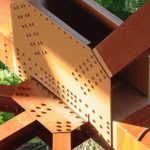Steel connections can be grouped into various classifications. The classification of the various types of steel connections assists with the design of steel connections by narrowing down the choices based on practical considerations. In general, steel connections can be classified into 5 different categories. In this article, we’ll explore these 5 categories, and provide links to a more in depth discussion of the particular steel connection classification. We hope that by the end of this series of articles, you’ll be able to answer the question of how to choose and design a structural steel connection between structural members. Connections can be classified by the following attributes:
Connecting Medium (fasteners / fixtures)
In modern times, the most common types of connecting mediums are welds and bolts. Welds offer simplicity, whilst bolts off economical installation in the field. Rivets have historically been used, but have been mostly replaced by bolts for a number of reasons. These include
- Rivited Connections
- Bolted Connections
- Welded Connections
Internal forces the connections are expected to transmit
One of the most important considerations when designing a steel connection is to design based on the internal forces that the connection is expected to transmit. Connections are classified as axial, shear (semi-rigid), or moment (rigid) connections based on the primary load that the connection is to carry. Connections however are most typically expected to carry two or more of these loads. These include:
- Moment Connections
- Shear Connections
- Axial Connections
Find out more about axial, shear, and moment connections here, along with some illustrated examples.
Type of structural elements that make up the connections
The type of structural element(s) that make up a steel connection is a common classification. There are many different types of structural elements, and the various placements to the structural members results in many different connection types. The most common structural elements are angles and plates. Angles can be placed at an i-beam’s web (web angle), or at the i-beam’s flange (seat angle), and plates can as well in a similar way (resulting in web plates and flange plates). Find out more about the different types here.
- Members being joined
The classification of steel connections is also commonly made to the structural members that they are to connect. In fact, the consideration for connecting columns and beams should act as one of the primary considerations when needing to design a steel connection. The common configurations include:
- Beam to Column Connections
- Beam to Beam Connections
- Column to Column Connections
- Column Base PlateConnections
- Method of erection
The method and location of erection of the steel connection is one type of classification that makes a big impact on the cost of the project. In general, field operations are more costly than shop operations. For this reason, the installation of steel connections is usually a combination of both to reduce the overall cost. Find out more about field and shop operations here.


